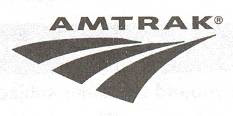
The Western Maryland Railroad Terminal
For yours truly, this is the station that started me on the road of trying to photograph Railroad Passenger stations in the towns I visited. The particular day this shot was taken, we were on our way back home. We stopped in Elkins on this particular afternoon. And there I had a chance to get a close look at something I had only glanced at in all my previous brief passes through town. This beautiful, but sadly forgotten railroad station.And the sight of it set me to thinking. I guess it was the grandeur of the building, built to standards equal to, or in many cases better than other contemporary buildings in the town that caught my eye. Why had this happened? Was it a fluke, or were similar structures still extant? And thus began the “quest.”
Elkins WV was originally created as a railroad town by Henry Gassaway Davis and his West Virginia Central and Pittsburgh Railway (WVC&P). The WVC&P began from an interchange with the Baltimore and Ohio Railroad in Piedmont WV. Davis had been working in Piedmont for the B&O for a number of years when he began “his” railroad in 1880. In 1890 Davis and a business partner, Stephen Elkins founded a town on the Tygart Valley River and named it after Elkins. The WVC&P reached Elkins in the late 1890’s.
Shortly after building through to Elkins, Davis sold the WVC&P Railroad to George Jay Gould who at the time controlled the Western Maryland Railroad. Gould had dreams of building a transcontinental line and saw the Western Maryland as the eastern portion of that dream. His original goal had been to make his west-east link through Pittsburgh.
How Gould saw the WVC&P fitting into this scheme is still not clear to me. According to Alan Clarke in his book on the Coal and Coke Railroad (Henry Gassaway Davis’ “retirement project”), Davis expected Gould to send his Western Maryland transcontinental trains through Elkins, down his Coal and Coke to Burnsville WV. Then the trains would follow another rail line that was supposedly going to be constructed through the southern portions of the Little Kanawha River drainage into Parkersburg WV where it would link up with a supposedly new line of the Wabash. Whether this was indeed Gould’s plan, or just a diversion that Gould promoted in his “war” with the Pennsylvania Railroad, is unknown to me (perhaps some reader of this posting can enlighten us all).
At any rate, presumably in anticipation of this transcontinental role for Elkins, Gould had the Western Maryland build this station in Elkins. Hence, this was the rationale, supposedly, for the station’s ornate features. This was going to be a “Transcontinental Line” (nevermind that the Western Maryland for years advertized itself as a “Fast Freight Line” and ran comparatively few long distance passenger trains).
The Western Maryland is “long gone,” absorbed into the Chessie System, and thence into CSX. And the trackage into Elkins is almost all gone as well. What was once a giant yard hosting many train cars is now largely a patch of weeds. And while CSX was at it when they “tore up” the track in the area, they also destroyed a key bridge just south of the station that tied the station trackage into the tracks then still left in the Elkins area thus effectively taking it “off line.” (It is rumored that they did this at night to avoid detection.)
The station, itself, has been extensively renovated both inside and out. And as beautiful as the picture above shows the outside to be, the inside is even more elegant, particularly the woodwork. The Station serves as a Visitor’s Center for the town of Elkins. Among other things, the town and many citizens in the area are attempting to create a West Virginia Railroad Museum on the “patch of weeds” in the back where the freight yards used to be. Presumably the station will become part of that overall idea.
The bridge south of the station that CSX “destroyed” has been replaced, and now tourist trains run by the West Virginia Central, utilize the Elkins terminal for some of their runs down the Tygart Valley and also up towards Cheat Bridge. The railroad has also moved its headquarters into the station building.



No comments:
Post a Comment